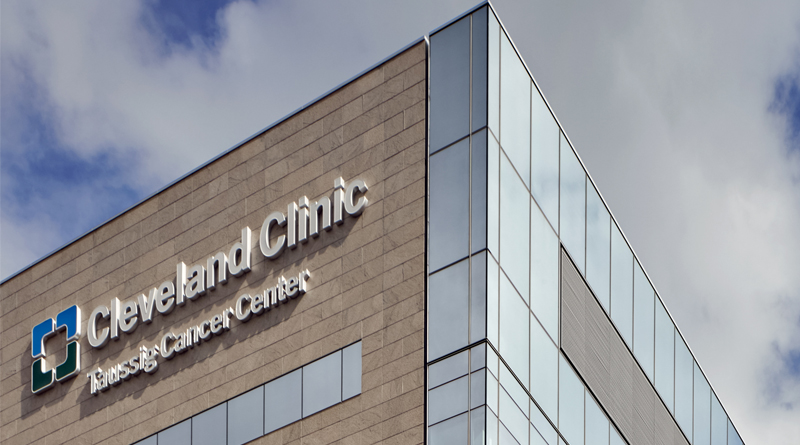Cleveland Clinic Taussig Cancer Center Now Open to the Public
By Rachel Leber
CLEVELAND — Cleveland Clinic’s new Taussig Cancer Center in Cleveland opened its doors to the public on March 6 after breaking ground in Sept. 2014. The new center was constructed to consolidate all outpatient cancer treatment services into one location to improve patient outcomes for Cleveland and surrounding community.

This 377,000-square-foot facility had a budget of $276 million. The building was designed by William Rawn Associates, an architecture firm in Boston, in collaboration with Stantec Architecture out of Cleveland. Construction for the project was led by Turner Construction’s Cleveland office. The designers drew on feedback from a panel of former cancer patients in an effort to meet patient needs and comfort as much as possible, according to Katrina Healy, corporate communications manager at Cleveland Clinic. Additionally, the facility is divided by cancer type, as a further example of patient comfort and ease built into the design.
The new Taussig Cancer Center has 126 exams rooms, 98 treatment rooms and private chemotherapy infusion suites. The center has genetic and genomics testing, on-site diagnostic imaging, and a dedicated area for Phase I, II and III clinical trials. The center provides high-level treatment technology, including six linear accelerators and a Gamma Knife suite.
Taussig was designed with lots of natural light throughout the entire facility to promote a healing environment, according to Healy. The reception areas are filled with light, and infusion rooms feature floor-to-ceiling windows overlooking pleasant views onto the outdoor landscaping. A skylight on the lower level of the building allows natural light where patients receive radiation and imaging services. Additionally, a 350-foot-long canopy at the building’s entrance provides a welcoming arrival for patients.
The facility’s first floor offers services intended to support the cancer center’s patients and families. Included in this set of services is a large laboratory to mitigate long waits for testing, a retail store stocked with items intended to serve the needs of patients and a cafe that caters to special patient diets. Additionally, there is a resource center for patients and their families, dedicated spaces for art and music therapy, and a boutique where patients experiencing chemotherapy-related hair loss are offered free wigs, caps and scarves. There is a wellness center, a private prosthetics fitting center and a spiritual area for prayer and meditation.

Photo Credit (all): Robert Benson Photography
The Cleveland Clinic implemented what they refer to as the Owner-Controlled Team Project Delivery Method (OCTPD) into the Taussig project. “We continued to evolve our OCTPD for the delivery of this project, and incorporated many LEAN principles,” said David Doren, owner’s representative at Cleveland Clinic’s Buildings and Properties Department. Some of these LEAN principles included using a last planner system, multiple pull planning scheduling sessions, schedule batching, prefabrication and co-location, according to Doren.
“We’re always looking to be at the forefront of construction, and to continuously improve and evolve our processes. LEAN is now a big part of that,” said Doren. “Design assist partners were brought on board early in the process to help with design details and create the detailed schedule in the pull planning sessions.” All of these factors resulted in a project that came in on schedule, and contributed to providing an atmosphere of hope and natural healing for patients and families, according to Doren.
The new Taussig Cancer Center also has a number of sustainable elements included in its design. LED lighting has been installed throughout the building with enhanced lighting controls to improve energy efficiency and costs. Premium efficient chillers are in use, as well as air handling units with a fan wall. The use of optimized glass and daylight harvesting was implemented to reduce overhead lighting use. The facility implemented some LEED sustainability measures including areas of water reduction, enhanced refrigerant management and the monitoring of outdoor air delivery monitoring.

